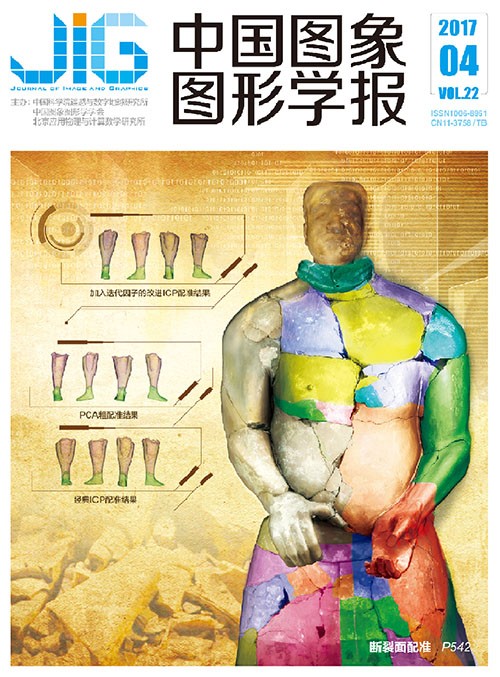
结合空间光谱预处理和约束非负矩阵分解的高光谱图像混合像元分解
摘 要
目的 混合像元问题在高光谱遥感图像处理分析中普遍存在,非负矩阵分解的方法被引入到高光谱图像解混中。本文提出结合空间光谱预处理和约束非负矩阵分解的混合像元分解流程。方法 结合空间光谱预处理的约束非负矩阵分解,如最小体积约束、流行约束等,通过加入邻域的空间和光谱信息进行预处理获得更优的预选端元,从而对非负矩阵分解的解混结果进行优化。结果 在5组不同信噪比的模拟数据实验中,空间预处理(SPP)和空间光谱预处理(SSPP)均能够有效提高约束非负矩阵分解(最小体积约束的非负矩阵分解和图正则非负矩阵分解)的解混结果,其中SPP在不同信噪比的情况下都能优化约束非负矩阵分解的结果,而SSPP在低信噪比的情况下,预处理效果更佳。利用美国内华达州Cuprite矿区数据进行真实数据实验,SPP提高了约束非负矩阵分解的解混精度,而SSPP在复杂场景下,解混精度更佳。模拟数据和真实数据的实验均表明,空间光谱预处理能够有效地提高约束非负矩阵分解的解混精度,特别是对于信噪比较低的情况下,融合空间和光谱信息对噪声有很好的鲁棒性。结论 本文对约束非负矩阵分解的解混算法添加空间光谱预处理,利用高光谱遥感数据的空间和光谱信息,优化预选端元,加入空间光谱预处理的非负矩阵解混实验流程,在复杂场景情况下,对噪声具有较好的鲁棒性。
关键词
Hyperspectral unmixing based on spatial and spectral preprocessing prior and constrained non-negative matrix factorization
Peng Qian1, Zhang Bing1, Sun Xu1, Gao Lianru1, Yu Wenbo1,2(1.Institute of Remote Sensing and Digital Earth, Chinese Academy of Sciences, Beijing 100094, China;2.School of Information Engineering, Zhengzhou University, Zhengzhou 450001, China) Abstract
Objective The problem of mixed pixels is common in hyperspectral remote sensing image processing and analysis, and the non-negative matrix factorization (NMF) method has been introduced into hyperspectral unmixing. This study proposes a new spatial and spectral preprocessing technique for constrained NMF, thereby making the unmixing process robust to noise. Method The spatial and spectral preprocessing technique is based on constrained NMF, such as minimum volume constrained NMF and graph-regularized NMF. The unmixing result of constrained NMF is improved by obtaining better endmember candidates from the preprocessing within the spatial and spectral information of the neighborhood. Result Spatial preprocessing and spatial-spectral preprocessing can both improve the unmixing accuracy of constrained NMF, such as minimum volume constrained NMF and graph-regularized NMF, in five groups of simulation data with different signal-to-noise ratios (SNRs). Spatial preprocessing can enhance the results of constrained NMF in all SNRs, whereas spatial-spectral preprocessing effectively optimizes accuracy, particularly for conditions with low SNR. Real data experiment based on the well-known hyperspectral data captured by the Airborne Visible/Infrared Imaging Spectrometer over Cuprite, Nevada is conducted. Spatial preprocessing improves the unmixing results of constrained NMF in the real data set, and spatial-spectral preprocessing is better than spatial preprocessing. The experiments on both simulated data and real data show that spatial and spectral preprocessing can efficiently improve the unmixing accuracy of constrained NMF, particularly in low SNR condition. This finding indicates robustness to noise with spatial and spectral information.Conclusion This study introduces spatial and spectral preprocessing into constrained NMF. The unmixing process becomes more robust to noise with constrained NMF by optimizing the endmember candidate using the spatial and spectral information of hyperspectral remote sensing data in complex remote sensing scenes.
Keywords
hyperspectral image pixel unmixing non-negative matrix factorization spatial and spectral preprocessing spectral mixture analysis
|



 中国图象图形学报 │ 京ICP备05080539号-4 │ 本系统由
中国图象图形学报 │ 京ICP备05080539号-4 │ 本系统由